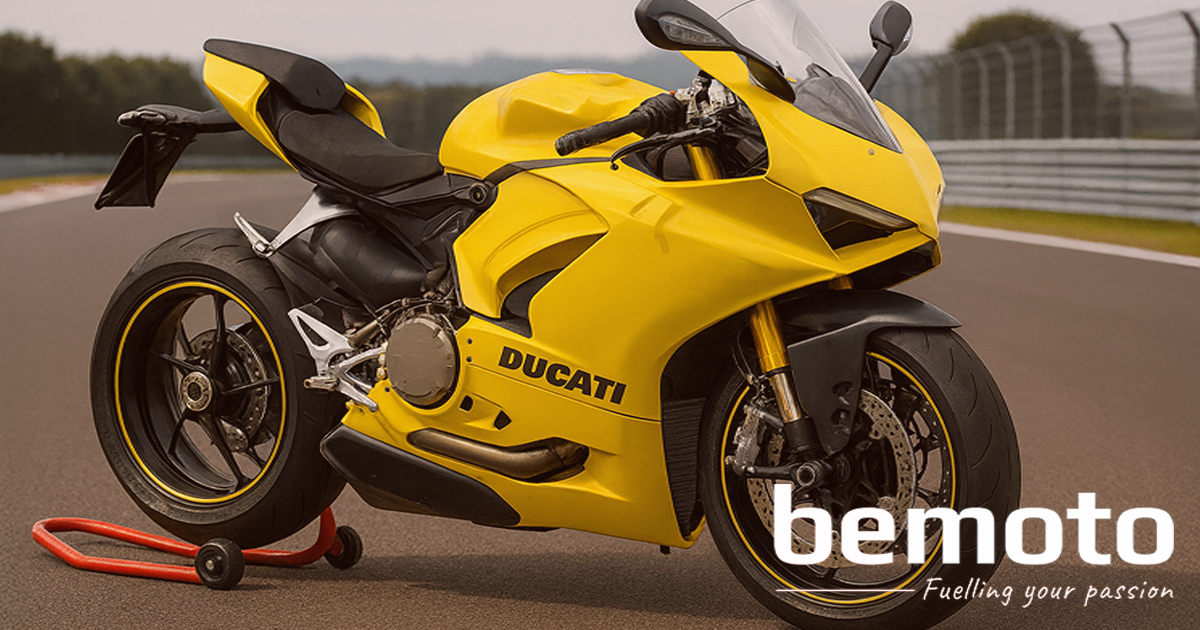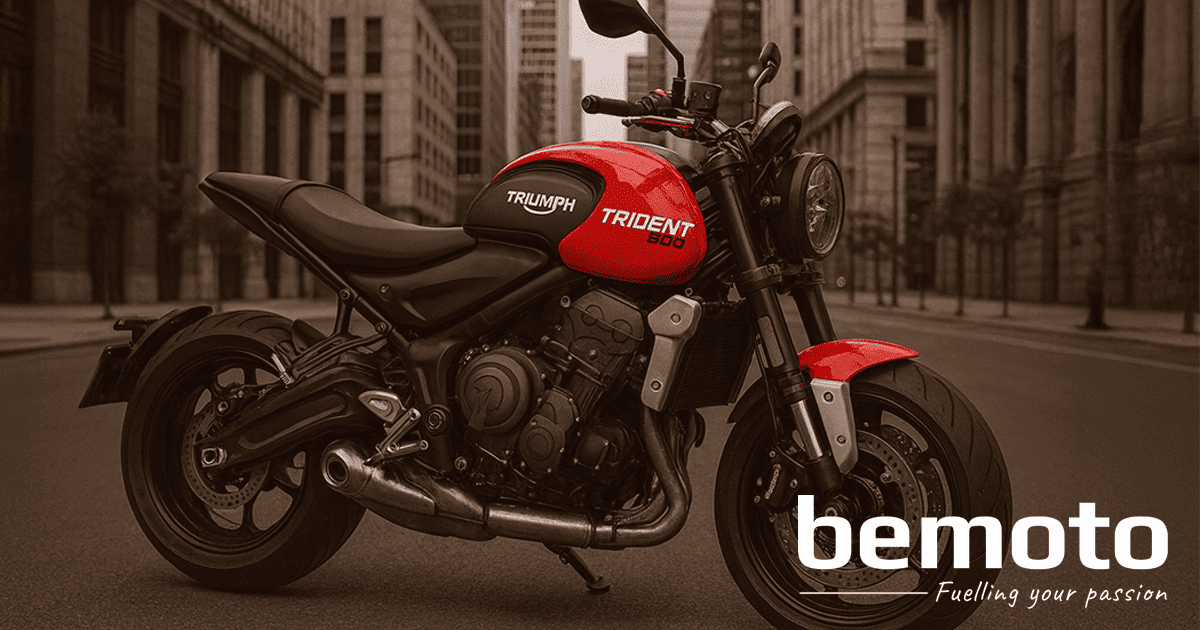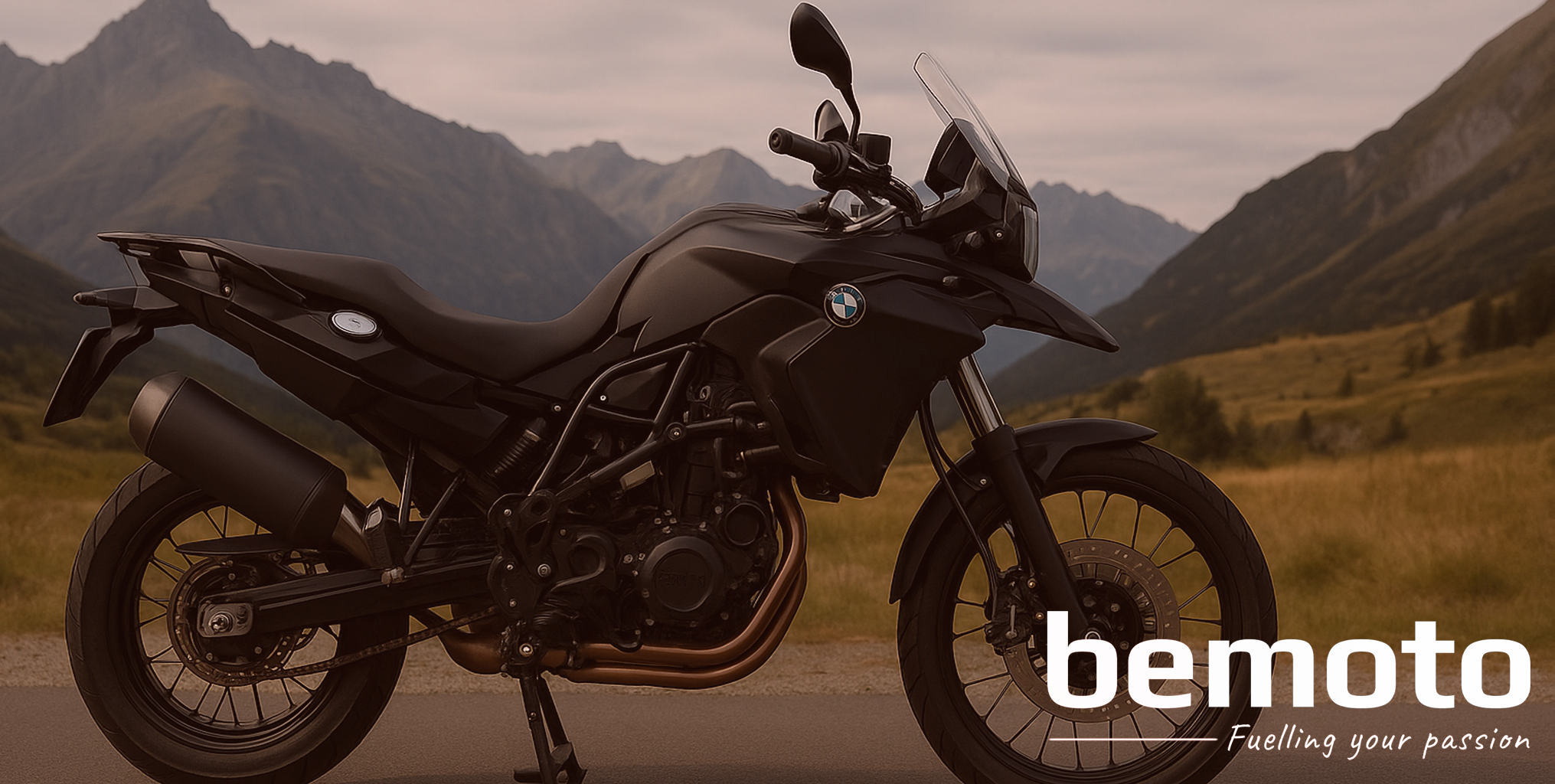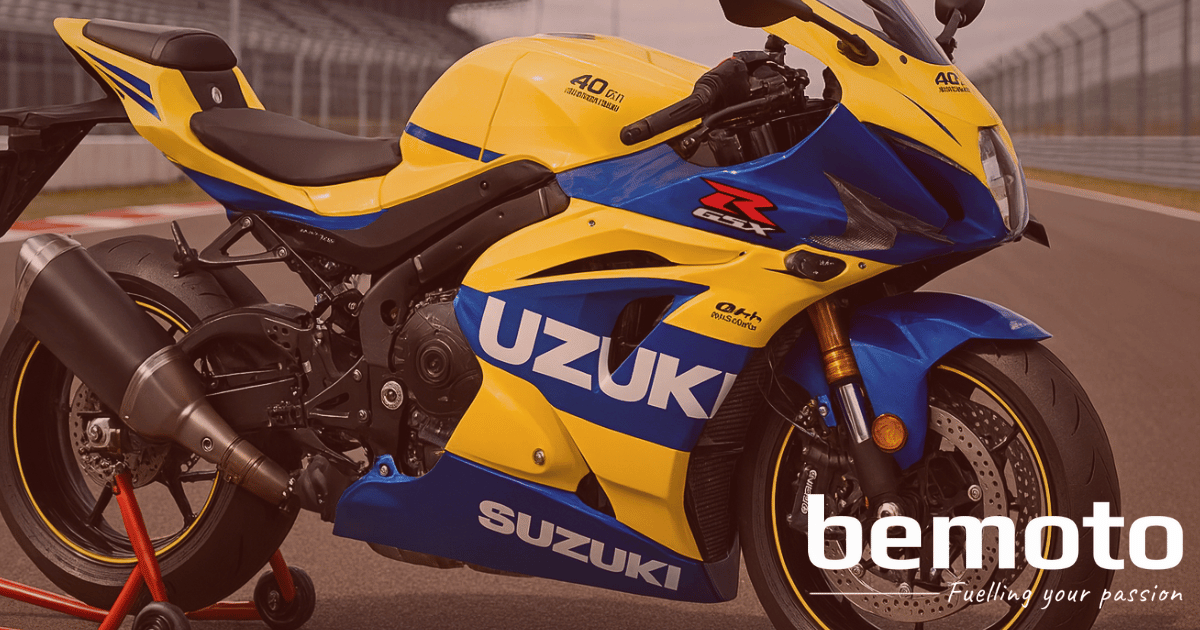The New Giallo Ducati Panigale V2 S: A modern homage to retro icons
Ducati has introduced a refreshed look for the new Ducati Panigale V2 S, this time drawing heavily on its historic use of yellow, a colour deeply embedded in Ducati’s racing and sporting heritage.
While this update brings no mechanical changes, the bold “Giallo Ducati” yellow livery reconnects the modern V2 S with some of the most iconic retro machines in Ducati history. The result is a motorcycle that blends contemporary supersport performance with a nostalgic visual identity inspired by machines from the 1970s, 1980s and 1990s.
Everything that makes the V2 S brilliant remains intact, but now it wears a colour that tells a story.
A brief history of Giallo Ducati and its retro roots
Although Ducati is strongly associated with red, yellow has played a major role in its racing lineage, as detailed in Ducati’s official heritage overview. Throughout the brand’s history, Giallo (yellow) has been used on special and competition-focused models, often to differentiate them from factory racers or to evoke Italian racing culture.
The new Panigale V2 S in Giallo Ducati pays tribute to several significant retro models, including:
Ducati 750 Sport (1973–1974)
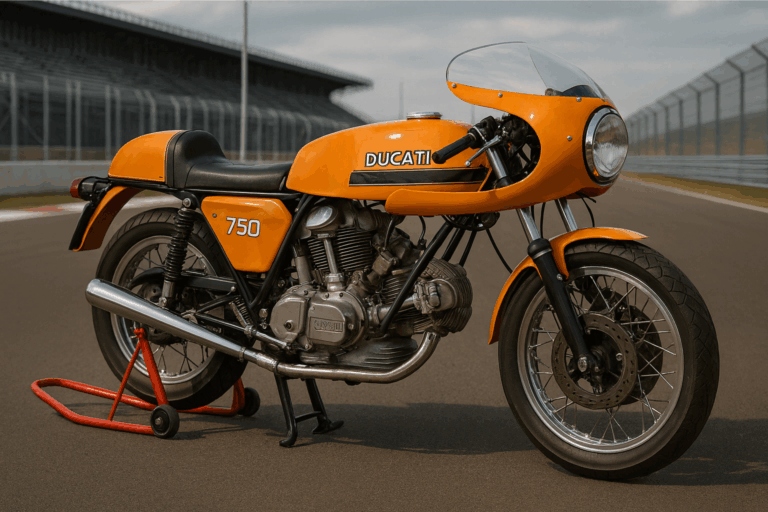
Ducati 750 Sport (1973–1974) Render by Motorbike Insurance Specialists, BeMoto
One of the earliest and most recognisable yellow Ducatis, the 750 Sport featured a vivid ochre-yellow tank paired with black striping. It became an instant classic and established yellow as an alternative Ducati identity during the 1970s.
Ducati 750 F1 (1985–1988, special editions)

Ducati 750 F1 (1985–1988, special editions) Render by Motorbike Insurance Specialists, BeMoto
While typically red, certain F1 variants and era-correct race fairings appeared in yellow. These lightweight, trellis-framed machines delivered the raw, analogue performance that defined Ducati sportbikes in the 1980s.
Ducati Superlight (1992)

Ducati Superlight (1992) Render by Motorbike Insurance Specialists, BeMoto
Perhaps the most famous yellow Ducati of the 1990s, the Superlight was a lightweight, sport-focused development of the 900SS. Its bright yellow fairing and minimalist design made it instantly recognisable and cemented yellow as a “purist’s choice” among Ducati enthusiasts.
The new Giallo Ducati Panigale V2 S brings the spirit of these retro machines into the modern era with a sharper and more contemporary interpretation of the colour.
Modern machine with retro spirit
The Panigale V2 S has long been Ducati’s answer for riders who want superbike handling and excitement without the extremity of its V4 flagship. Powered by an 890 cc V-twin engine and supported by premium Öhlins suspension, an aluminium monocoque frame and Ducati’s leading electronics suite, the V2 S represents a perfect balance of road usability and track capability. With the introduction of the Giallo Ducati paint scheme, the V2 S becomes more than a modern supersport. It becomes a bridge between Ducati’s past and present.
What we know so far
The new Panigale V2 S edition introduces only one significant update, which is the Giallo Ducati yellow colourway. Ducati has confirmed that all hardware and electronic systems remain unchanged, including the following:
- The 890 cc Superquadro V-twin engine producing 120 horsepower and 93.3 Nm of torque
- The Öhlins NIX-30 43 mm forks and fully adjustable Öhlins rear shock
- The Brembo M50 monobloc callipers
- The six-axis IMU with cornering ABS, traction control, wheelie control and engine-brake control
- Ducati Quick Shift (up and down)
- Four riding modes, including Race, Sport, Road and Wet
- A five-inch TFT display
- A lightweight lithium-ion battery
Optional accessories such as the track package, multimedia integration and tyre-pressure monitoring remain available.
The eye-watering Panigale V2 S specifications
Design Philosophy
Retro bikes such as the 750 Sport and the Superlight celebrated simplicity, with round headlights, minimalistic fairings and exposed mechanical elements. By contrast, the Panigale V2 S is sculpted, aerodynamic and engineered for high-speed stability. Despite these differences, the new yellow colour unifies the old and the new by bringing an iconic heritage colour to an aggressively modern silhouette.
Performance
Ducati’s Panigale V2 S sits in an interesting space in the superbike world. It is lighter, more agile and more usable than the fire-breathing machinery that usually carries the Panigale name, yet it still delivers the kind of performance that makes a proper impression on both road and track.
The 890 cc V-twin uses conventional spring-valve actuation and variable intake timing rather than the full desmo set-up of old, but this change hasn’t dulled the character. It produces around 120 horsepower at over 10,000 rpm and just over 93 Nm of torque, most of which comes in low enough to make the bike feel strong without any theatrics.
Ducati claim 176 kg wet without fuel, which explains why the V2 S feels so keen to turn in and so composed through direction changes.
Riding Experience
On the road the bike is noticeably more forgiving than the bigger Panigales, and that is largely down to its balance of power, weight and electronics.
The mid-range is strong, which makes everyday riding far less stressful, and the combination of cornering ABS, traction control, wheelie control and engine-brake management means you can push without feeling like you are wrestling the bike into submission.
On track it still shows the DNA you expect from a Panigale. Brembo monobloc brakes, firm geometry, a planted front end and the sharpness you want when you really start upping the pace.
Styling
Styling is a big part of why this bike stands out, and Ducati have been clever with the introduction of the new Giallo Yellow option. The Panigale V2 S already carries the familiar muscular fairing design, the tight tail unit and the modern, chiselled look that defines the current Ducati sportsbike line.
The yellow paint brings an entirely different attitude. It taps into Ducati’s heritage without feeling retro, nodding to the 748 and 749 era while still looking like a fresh, modern superbike. Compared with the standard Ducati red, the Giallo version is more striking on the road, more noticeable at shows and, frankly, more interesting to look at.
Does it stack up to the competition?
In this class the Panigale V2 S Giallo sits in a sweet spot between outright superbike pedigree and real-world usability, and it shows when you compare it to the usual suspects. Yamaha’s R9 matches it closely on power but feels more street-orientated, with less of the sharp, track-bred edge that defines the Ducati.
Kawasaki’s ZX-6R remains a credible option for riders who like a revvy, traditional supersport character, but its smaller 636 cc engine, higher weight and weaker mid-range mean it can’t offer the same punch or premium feel. The Ducati’s stronger torque delivery, lighter chassis and far more distinctive styling, especially in Giallo Yellow, give it the upper hand for riders who want something that looks special and performs with more maturity than the typical middleweight sportbike.
The addition of the Giallo Ducati colour gives it a distinctive retro-inspired identity in a class where most bikes rely on modern graphics over heritage design.
Launch, pricing and availability
The Giallo Ducati Panigale V2 S is priced slightly higher than the standard red option:
- £17,695 (Giallo Ducati yellow)
- £17,395 (Ducati Red)
The first units are arriving in dealerships now, with orders already open through authorised Ducati retailers. Customer deliveries are expected to begin immediately as stock becomes available.
Enjoyed this post?
Dive into more insights, stories, and tips across The Pit Stop, there’s plenty more waiting for you!
Don’t forget to subscribe to the mailing list for fresh content, insider perks, and updates delivered straight to your inbox! See the sign up form below.

